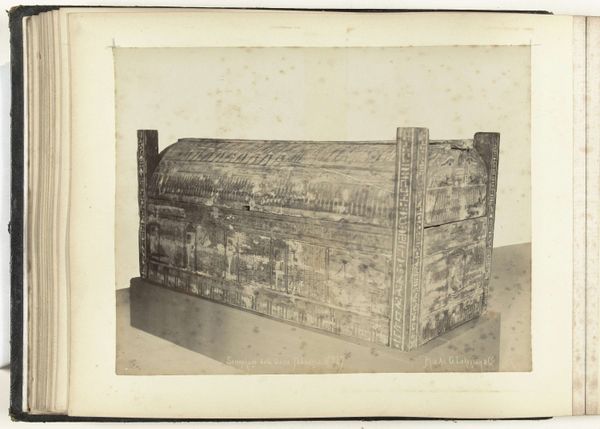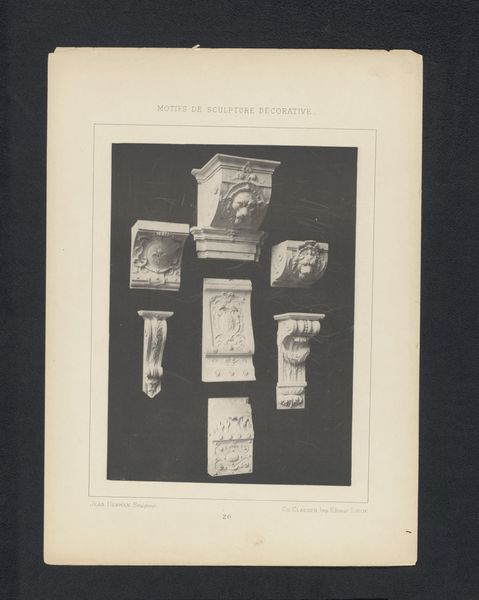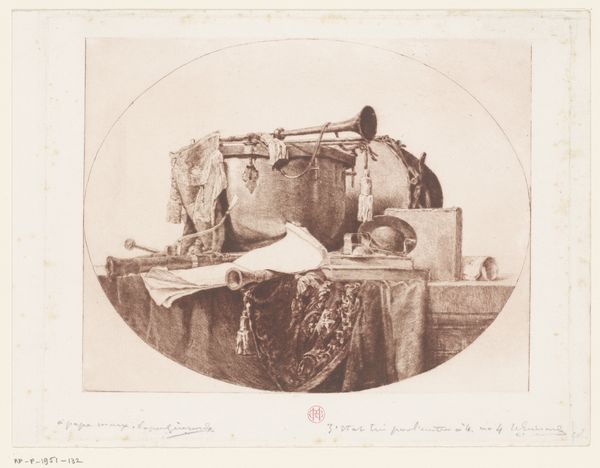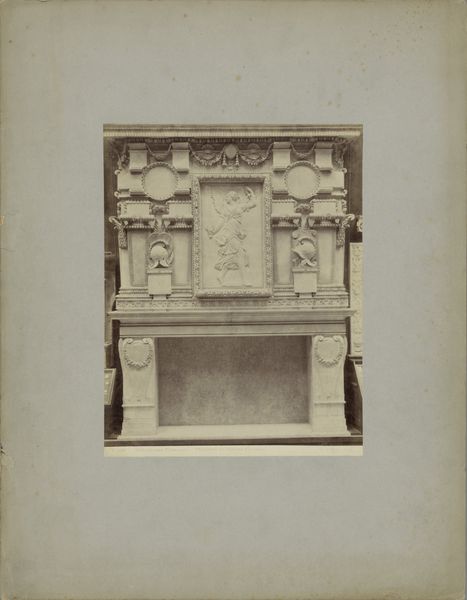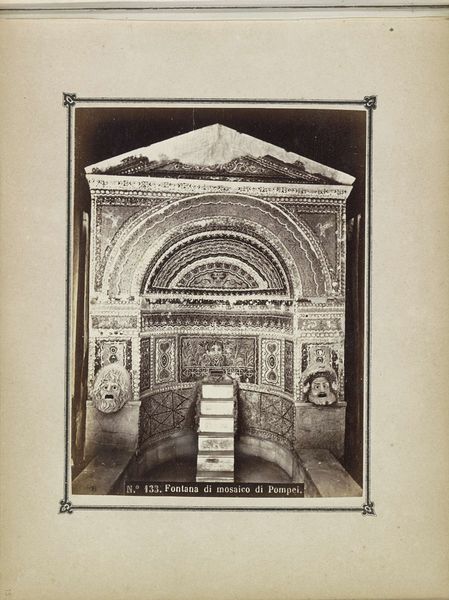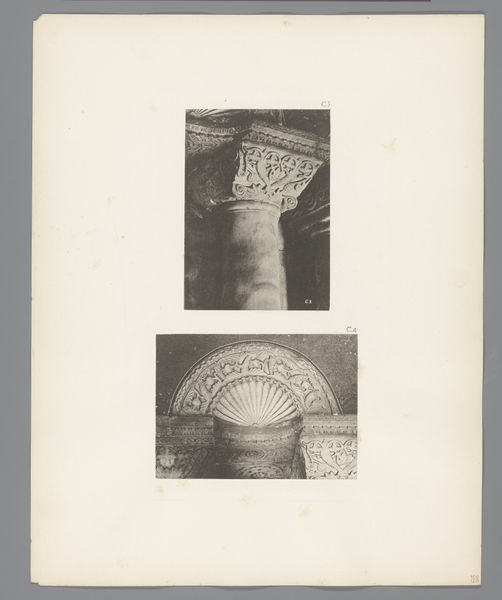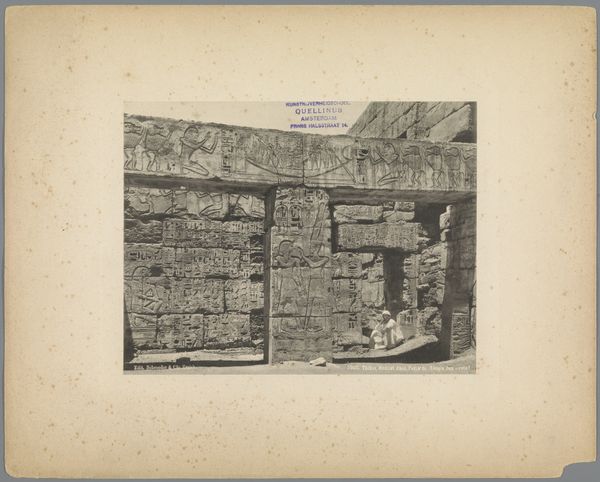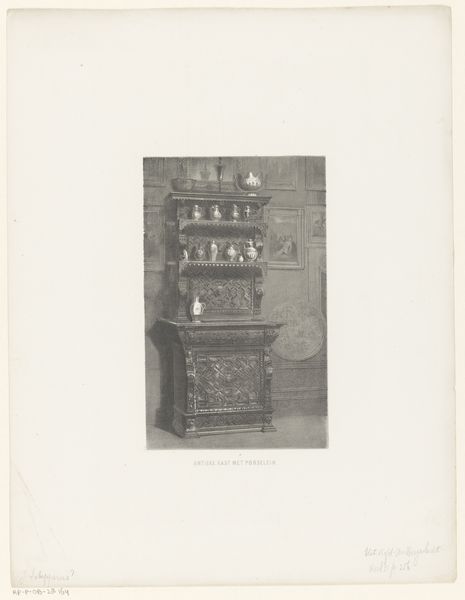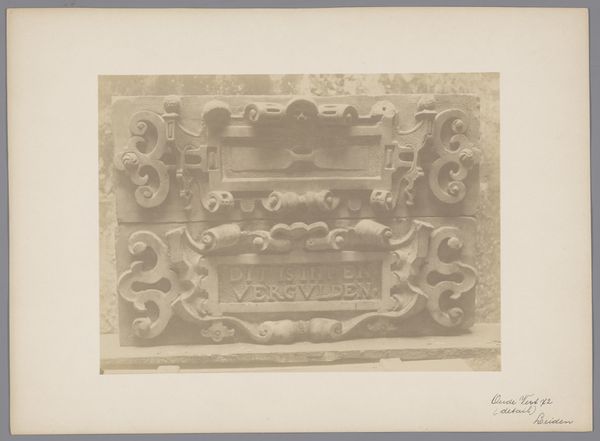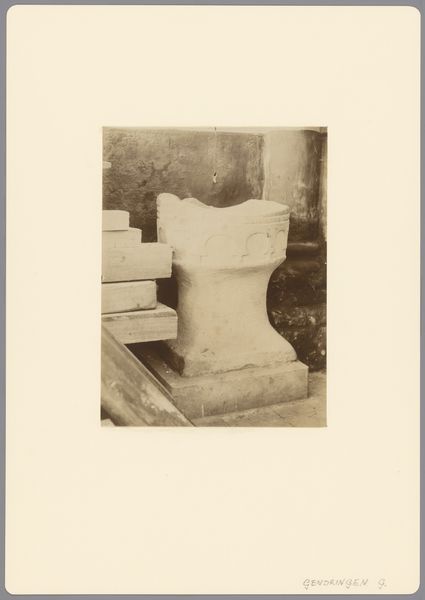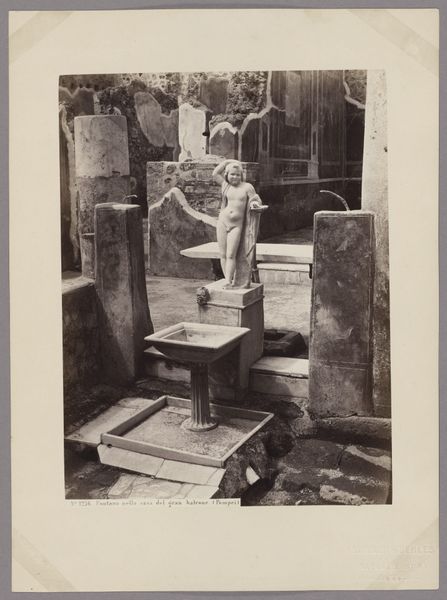
photography, gelatin-silver-print, albumen-print
#
war
#
photography
#
coloured pencil
#
gelatin-silver-print
#
history-painting
#
albumen-print
Dimensions: Image:22.1 x 18.9cm (8 11/16 x 7 7/16in.) Mount: 13 9/16 × 10 9/16 in. (34.5 × 26.9 cm)
Copyright: Public Domain
Curator: This striking albumen print, titled "Relics of Andersonville Prison," was created in 1866 by Brady & Co. Editor: My first impression is one of profound melancholy. The muted tones and the carefully arranged objects evoke a sense of loss and the attempt to piece together fragmented memories. Curator: It's interesting how Brady, known for Civil War photography, shifted here to still life to address a social and political catastrophe. It highlights how such imagery served in the post-war period as public memorial and accusation. Editor: Indeed, note the choice of items presented: eating utensils, plates, small buckets… everyday items signifying basic human needs deliberately withheld. We understand Brady is calling attention to the deprivation and intentionality behind the prisoner of war camp’s horrendous conditions. It serves a form of visual rhetoric. Curator: And the labor involved in crafting such a staged photograph must be acknowledged too, not just Brady's artistry. Each object selected, arranged, and then photographed emphasizes the conscious decision to monumentalize these items and by extension, the experiences they represent. Note also how an object labelled 'Andersonville Dead Line' dominates the image... Editor: The material condition of those objects must tell a story about available resources within the prison and the trade networks inmates had to set up, which can bring new layers to interpreting this history... But can this singular depiction offer justice to those historical realities? To what extent does it reinforce rather than question certain public narratives? Curator: Perhaps, but what's significant is the artwork’s cultural capital today as part of institutions like the Met – it solidifies how social memory is both made and challenged, prompting questions of institutional responsibility. Editor: True. The object’s historical placement is as crucial as what the piece intends to convey. A really sobering yet thought-provoking work overall. Curator: Precisely. Its lasting value comes from provoking critical thought about history, materiality, and collective memory, which prompts reflection long after the viewing experience ends.
Comments
No comments
Be the first to comment and join the conversation on the ultimate creative platform.
